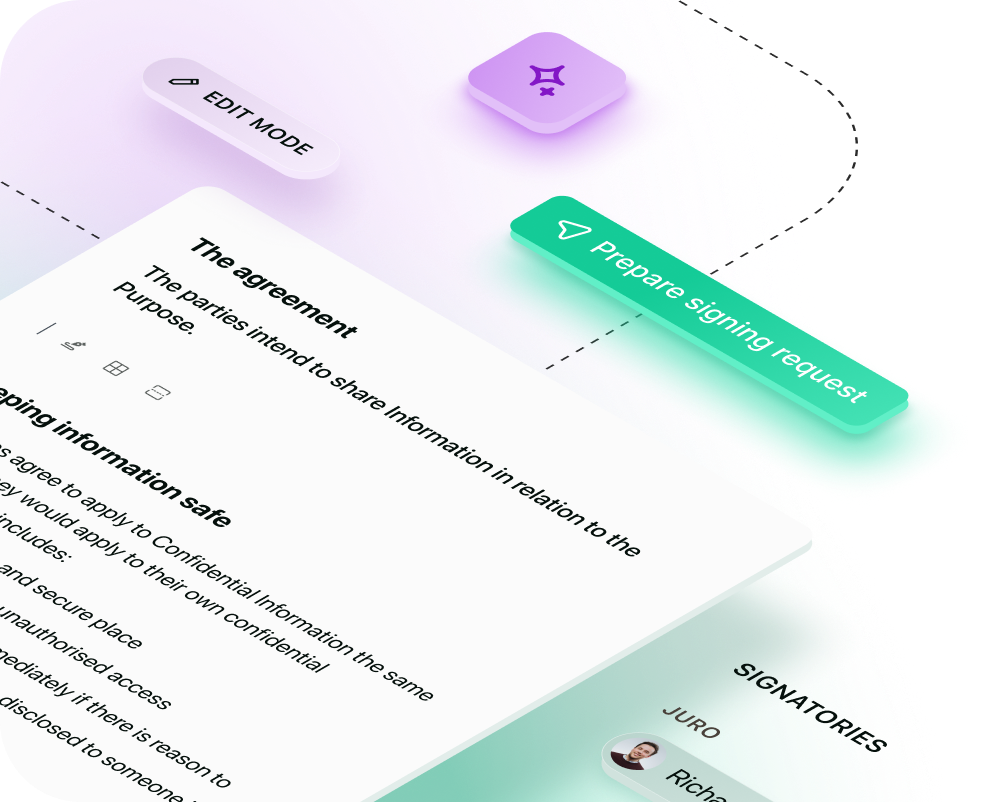Solutions
Customer Support
Resources
Use this settlement agreement template for resolving disputes without resorting to lengthy and costly litigation.




Settlement agreements are essential tools for resolving disputes without resorting to lengthy and costly litigation.
If you've ever been involved in a dispute, whether personal or business-related, you might have come across this type of contract.
Let's delve into the world of settlement agreements and how you can automate yours today.
A settlement agreement is a legally binding contract between two or more parties, used to resolve a dispute outside of court. The parties involved agree on specific terms, often involving one party agreeing to pay a sum of money, in exchange for the other party dropping any legal claims against them.
These agreements are commonly used in employment disputes, where an employee agrees not to pursue any legal action against their employer in return for a specified sum of money or other benefits.
They can also be used in various other situations, such as personal injury claims, business disputes and property disagreements.

There are numerous reasons a settlement agreement could be the best option for you.
Usually, a settlement agreement will include the following:
.avif)
Settlement agreements can be used in a number of situations, some of which are outlined below:
Creating a robust settlement agreement is crucial to ensure all parties are protected and the dispute is fully resolved. Here are some steps to consider:
Always get legal advice when drafting or entering into a settlement agreement.
Clearly outline the nature of the dispute and the reasons for the settlement.
Clearly define all terms, including payment amounts, deadlines, and any other obligations.
Ensure the agreement includes a release of all claims related to the dispute.
If desired, include a confidentiality clause to keep the terms of the agreement private.
Ensure all parties sign and date the agreement.

Modern businesses and individuals are looking for efficient ways to draft and manage settlement agreements.
Contract automation platforms can streamline the process, ensuring accuracy, consistency, and speed.
Features might include template generation, electronic signatures, and centralized storage, making the entire process seamless.
Settlement agreements are powerful tools for resolving disputes amicably and efficiently. By understanding their purpose and structure, parties can ensure they protect their interests and achieve a satisfactory resolution.
Fortunately, in today's legal landscape, it's uncommon for legal teams to be without a settlement agreement template. Most organizations will have crafted templates for essential contracts like settlement agreements and stored them in shared drives for management and HR teams to access.
Having a settlement agreement template on hand and ready for customization eliminates the need for management or HR teams to await the legal department's input when resolving a dispute or finalizing a settlement. This accelerates the resolution process, ensuring disputes are settled promptly and amicably.
Moreover, this approach ensures that a majority of the settlement agreement terms remain standardized, significantly reducing the potential for errors and inconsistencies.
However, even if legal teams have a settlement agreement template prepared, there remains a substantial amount of administrative work for HR and management teams to finalize them.
When these contracts are managed in traditional word processors, teams must manually input all relevant data and adjust the terms within the contract to match the specific settlement conditions.
Given that word processing documents are static, modifying a settlement agreement template often necessitates creating new versions and copying specific sections of the agreement into a new document to update the terms.
Despite having a settlement agreement template, managing these contracts manually can become a monotonous and lengthy task for HR and management teams.
.png)
The good news is that this process is ripe for automation.
Contract automation platforms can alleviate this burden by streamlining the administrative tasks that HR and management teams often find cumbersome. Juro's contract automation platform offers businesses the tools to handle settlement agreements more efficiently, thanks to features like:
For more information, simply hit the button below to book a personalized demo.
Juro is the #1-rated contract platform globally for speed of implementation.


Juro embeds contracting in the tools business teams use every day, so they can agree and manage contracts end-to-end - while legal stays in control.
Book your demo